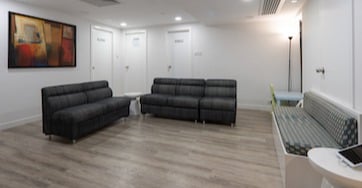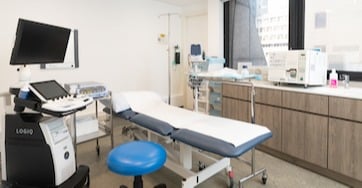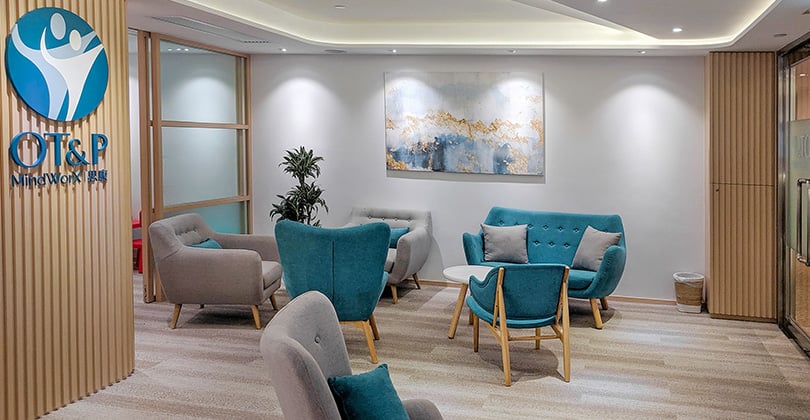What is ALS?
Amyotrophic lateral sclerosis (ALS), also known as Lou Gehrig's disease (肌萎縮性側索硬化症, 又稱漸凍人症), is a progressive neurodegenerative disorder that affects nerve cells in the brain and spinal cord. It involves the brain's loss of connection with the muscles, slowly leading to inability to walk, talk, eat and eventually breathe.
What causes ALS?
The ALS cause is a complex interplay of genetic and environmental factors. Some of the known causes and risk factors include:
Genetic Factors (Familial): ALS is inherited in about 5-10% of cases.
Sporadic ALS: There are many ALS cases (90-95%) without a clear family history. Sporadic cases are thought to result from a combination of genetic predisposition and environmental factors, although the exact mechanisms are not fully understood.
Common ALS symptoms
Muscle Weakness
The earliest and most common symptom is muscle weakness, which typically starts in the limbs. It can manifest as difficulty with tasks like grasping objects, walking, speaking, or swallowing.
Muscle Atrophy
As the disease progresses, muscle atrophy (wasting) occurs due to the loss of motor neurons. This leads to a visible decrease in muscle size and strength.
Spasticity
Some individuals with ALS may experience muscle stiffness and spasms, known as spasticity. This can cause muscle cramps, discomfort, and difficulty with movement.
Difficulty Speaking and Swallowing
Weakness in the muscles responsible for speech and swallowing can result in slurred speech, difficulty forming words, and difficulty swallowing.
Breathing Difficulties
As ALS affects the respiratory muscles, individuals may experience breathing difficulties, shortness of breath, and eventually respiratory failure. This is the most common cause of death in ALS.
ALS Stages
ALS (Amyotrophic Lateral Sclerosis) is typically divided into several stages based on the progression of symptoms and functional decline. The progression and duration of each stage can vary from person to person. The following general stages are commonly observed:
Early Stage
In the early stage of ALS, individuals may experience mild symptoms such as:
-Muscle weakness
-twitching (fasciculations)
-cramping.
The weakness usually begins in the hands, arms, legs, or feet and may affect one side of the body initially. Tasks that require fine motor skills, such as buttoning a shirt or gripping objects, may become more challenging. Despite these symptoms, individuals can still perform most activities of daily living (ADLs) independently.
Intermediate Stage
During the intermediate stage, muscle weakness and atrophy progress, affecting more areas of the body. The weakness spreads to both sides of the body, involving the arms, legs, trunk, and respiratory muscles.
Mobility and coordination become increasingly difficult, and individuals may require assistive devices such as canes, walkers, or wheelchairs to aid in mobility. Speech and swallowing difficulties may also arise, requiring adaptive techniques or assistive devices for communication and eating.
Advanced Stage
In the advanced stage of ALS, individuals experience significant muscle weakness and widespread paralysis. They may lose the ability to walk, stand, or perform self-care tasks independently. Assistance with ADLs becomes essential, and caregivers or doctors may be needed to provide support.
Communication may become severely impaired, leading to alternative communication methods such as eye-tracking or speech-generating devices. Respiratory function continues to decline, and individuals may require non-invasive ventilation or a tracheostomy to assist with breathing.
End Stage
The end stage of ALS is characterised by near-total paralysis and severe respiratory compromise. Individuals are typically bedridden and highly dependent on caregivers for all aspects of care. Communication is limited, and respiratory support becomes critical to sustain breathing. Complications such as infections, respiratory failure, or nutritional difficulties may arise, leading to end-of-life care considerations.
ALS is a progressive and incurable disease, and supportive care from a multidisciplinary team is crucial to address the physical, emotional, and psychosocial needs of individuals with ALS throughout each stage of the disease.
What interventions can physiotherapists do for ALS?
Physiotherapy can aid in the management of ALS by addressing physical challenges and maximising functional abilities. Here are some common physiotherapy interventions for ALS:
Range of Motion Exercises
Passive and active range of motion exercises help maintain joint flexibility and prevent muscle stiffness and contractures.
Strengthening Exercises
Specific strengthening exercises can help maintain muscle strength and reduce muscle wasting. These exercises are tailored to the individual's abilities and focus on the muscles most affected by ALS.
Breathing Exercises
Respiratory muscle weakness is a significant concern in ALS. Physiotherapists can teach breathing exercises to improve lung capacity, maintain effective breathing patterns, and manage respiratory symptoms.
Assistive Devices
Physiotherapists can assess the need for assistive devices such as mobility aids, orthoses, or adaptive equipment to aid with activities of daily living and enhance independence.
Postural Management
Maintaining proper posture to prevent discomfort and complications. Physiotherapists can guide positioning and recommend appropriate support or equipment to promote optimal posture.
Fall Prevention
As weakness progresses, the risk of falls increases. Physiotherapists can assess balance and gait and implement strategies to minimise fall risks such as balance exercises and recommending appropriate assistive devices.
Pain Management
Physiotherapists can employ techniques like manual therapy, heat or cold therapy, and transcutaneous electrical nerve stimulation (TENS) to help manage pain and discomfort associated with ALS.
Do note that physiotherapy interventions are personalised based on the individual's specific needs and stage of the disease. The treatment plan may evolve and adapt as the condition progresses. For accurate and tailored information about physiotherapy for ALS, it's best to consult a doctor or refer to reliable sources such as the OT&P website.
ALS is a highly variable disease, and the progression and symptoms can differ from person to person. If you suspect you or someone you know may have ALS, it's crucial to consult a doctor for an accurate diagnosis and appropriate management.
 Central General Practice
Central General Practice
 Repulse Bay
Repulse Bay
 Clearwater Bay
Clearwater Bay
 BodyWorX Clinic
BodyWorX Clinic
 Central Specialist Clinic
Central Specialist Clinic
 MindWorX Clinic
MindWorX Clinic
 Partner Clinics
Partner Clinics
 Family Clinic
Family Clinic
 OT&P Annerley Midwives Clinic
OT&P Annerley Midwives Clinic








-2.png?length=500&name=%5BMKT%5DWebsite%20Blog%20Photo%20(23)-2.png)
.png?length=500&name=%5BMKT%5DWebsite%20Blog%20Photo%20(22).png)

